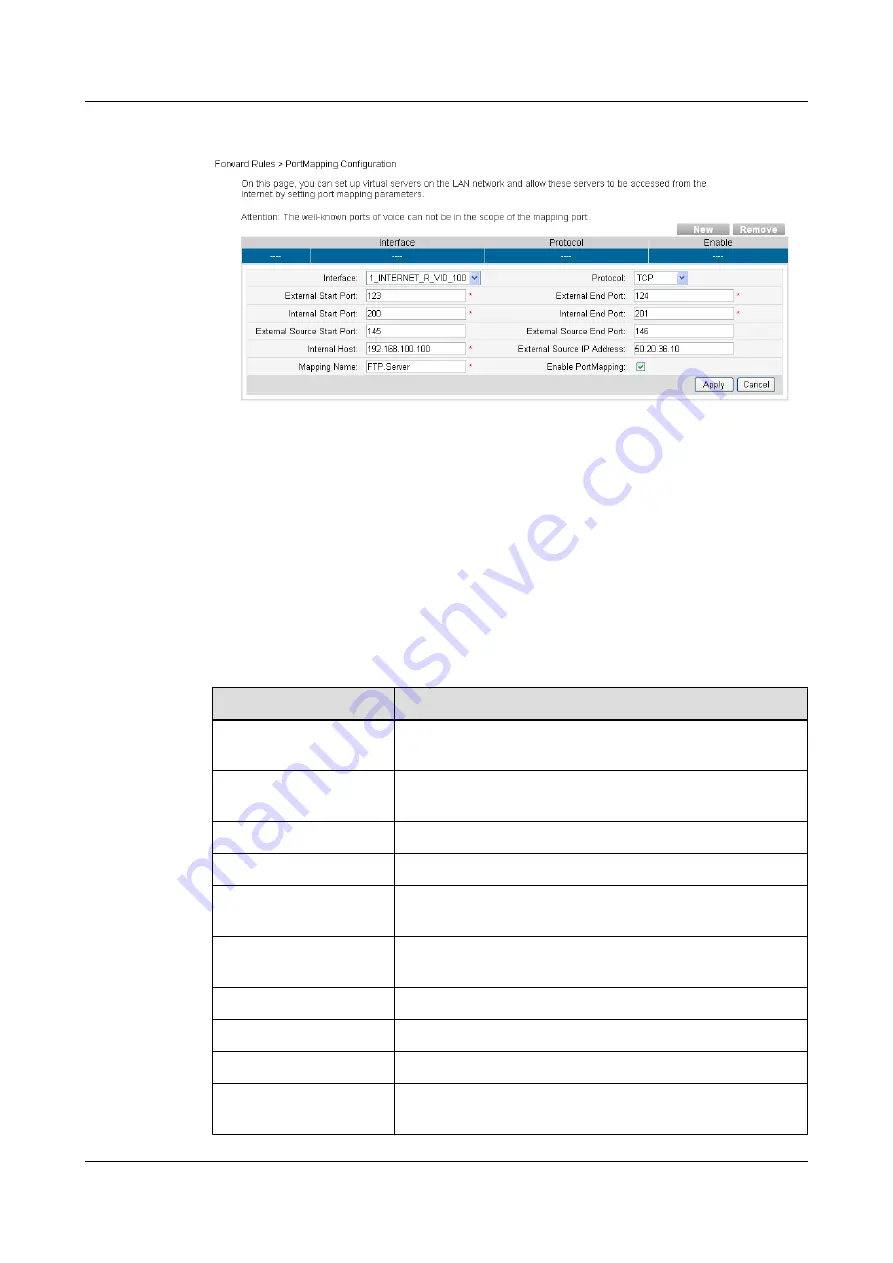
Figure 5-24
PortMapping Configuration
2.
Click
Apply
to apply the configuration.
Port mapping indicates that the Intranet server is allowed to be open to the Extranet (for example,
the Intranet provides the Extranet with a WWW server or FTP server). Port mapping is to map
the Intranet host IP address and port ID to Extranet IP address and corresponding port ID so that
users from Extranets can access the Intranet server. With port mapping, the users cannot see the
Intranet IP address and they see the Extranet IP address.
describes the parameters related to port mapping.
Table 5-11
Parameters related to port mapping
Parameter
Description
Interface
Indicates the name of the WAN interface where port mapping is
enabled.
Protocol
Indicates the protocol type of port mapping packet, which may
be TCP, UDP, or TCP/UDP.
External Start Port
Indicates the destination start port of the external data packet.
External End Port
Indicates the destination end port of the external data packet.
Internal Start Port
Indicates the internal destination start port of the port mapping
packet.
Internal End Port
Indicates the internal destination end port of the port mapping
packet.
External Source Start Port Indicates the source start port of the external data packet.
External Source End Port
Indicates the source end port of the external data packet.
Internal Host
Indicates the IP address of the host to which the port is mapped.
External Source IP
Address
Indicates the source IP address of the external data packet.
EchoLife HG8240/HG8245/HG8247 GPON Terminal
Service Manual
5 Web Page Reference
Issue 04 (2011-01-12)
Huawei Proprietary and Confidential
Copyright © Huawei Technologies Co., Ltd.
5-27
















































